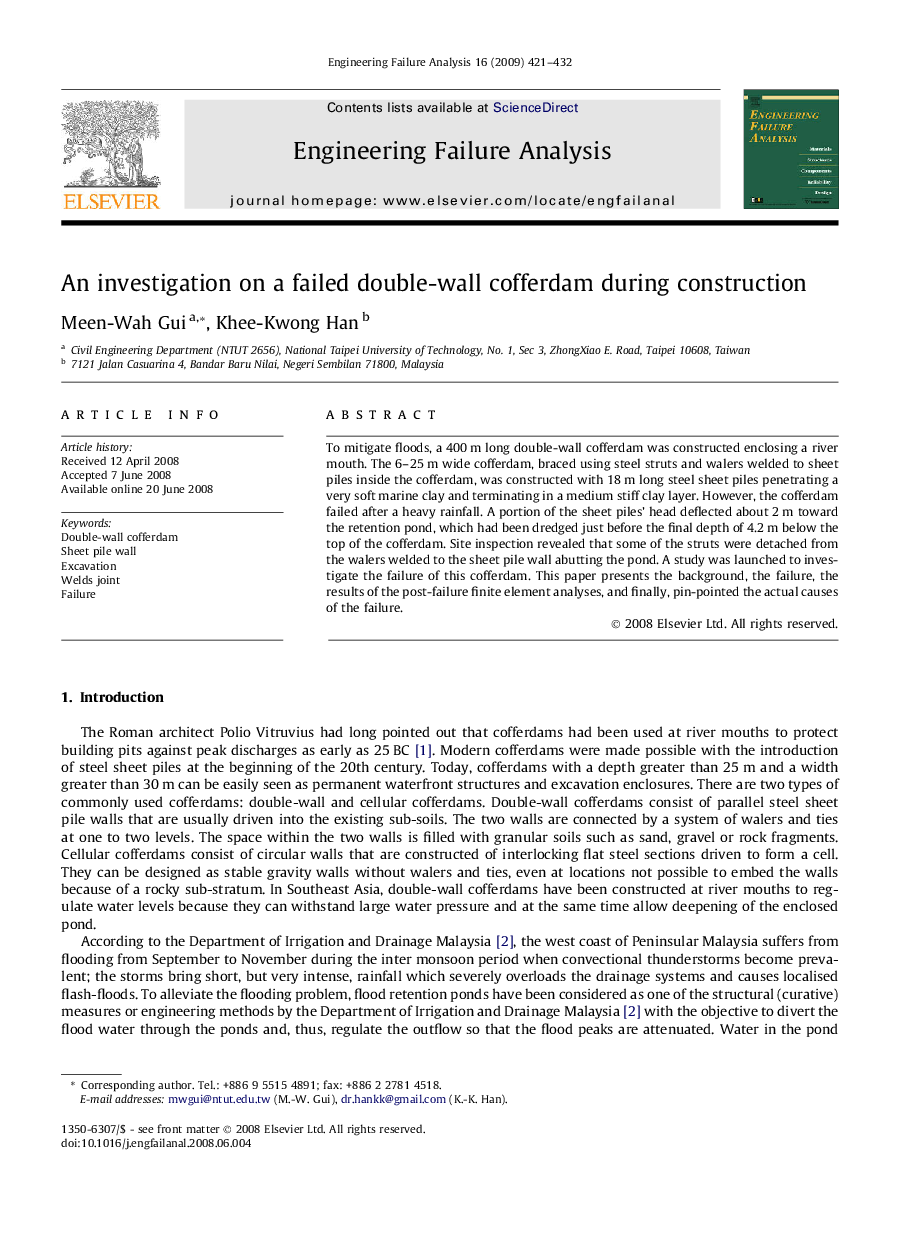| Article ID | Journal | Published Year | Pages | File Type |
|---|---|---|---|---|
| 770066 | Engineering Failure Analysis | 2009 | 12 Pages |
To mitigate floods, a 400 m long double-wall cofferdam was constructed enclosing a river mouth. The 6–25 m wide cofferdam, braced using steel struts and walers welded to sheet piles inside the cofferdam, was constructed with 18 m long steel sheet piles penetrating a very soft marine clay and terminating in a medium stiff clay layer. However, the cofferdam failed after a heavy rainfall. A portion of the sheet piles’ head deflected about 2 m toward the retention pond, which had been dredged just before the final depth of 4.2 m below the top of the cofferdam. Site inspection revealed that some of the struts were detached from the walers welded to the sheet pile wall abutting the pond. A study was launched to investigate the failure of this cofferdam. This paper presents the background, the failure, the results of the post-failure finite element analyses, and finally, pin-pointed the actual causes of the failure.
